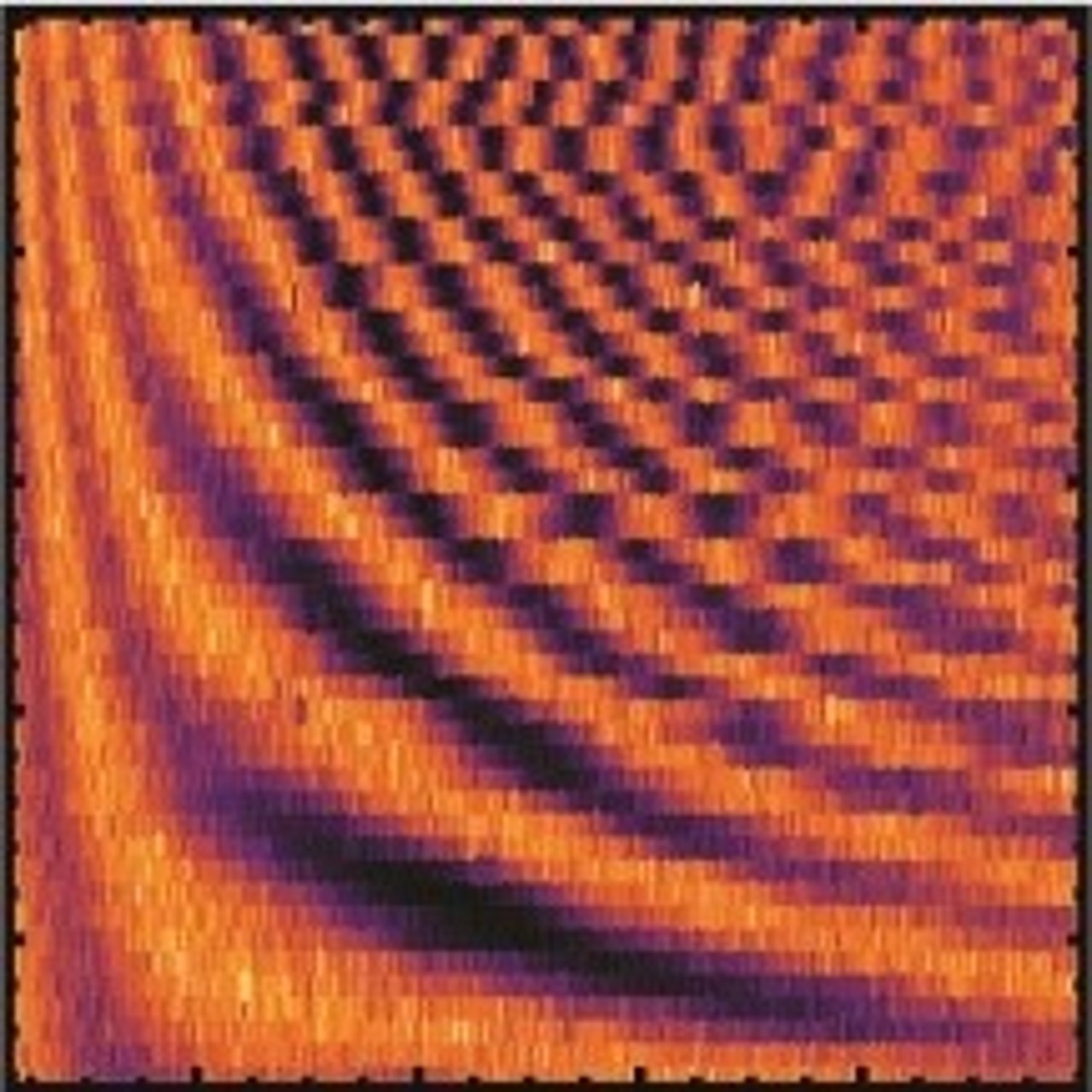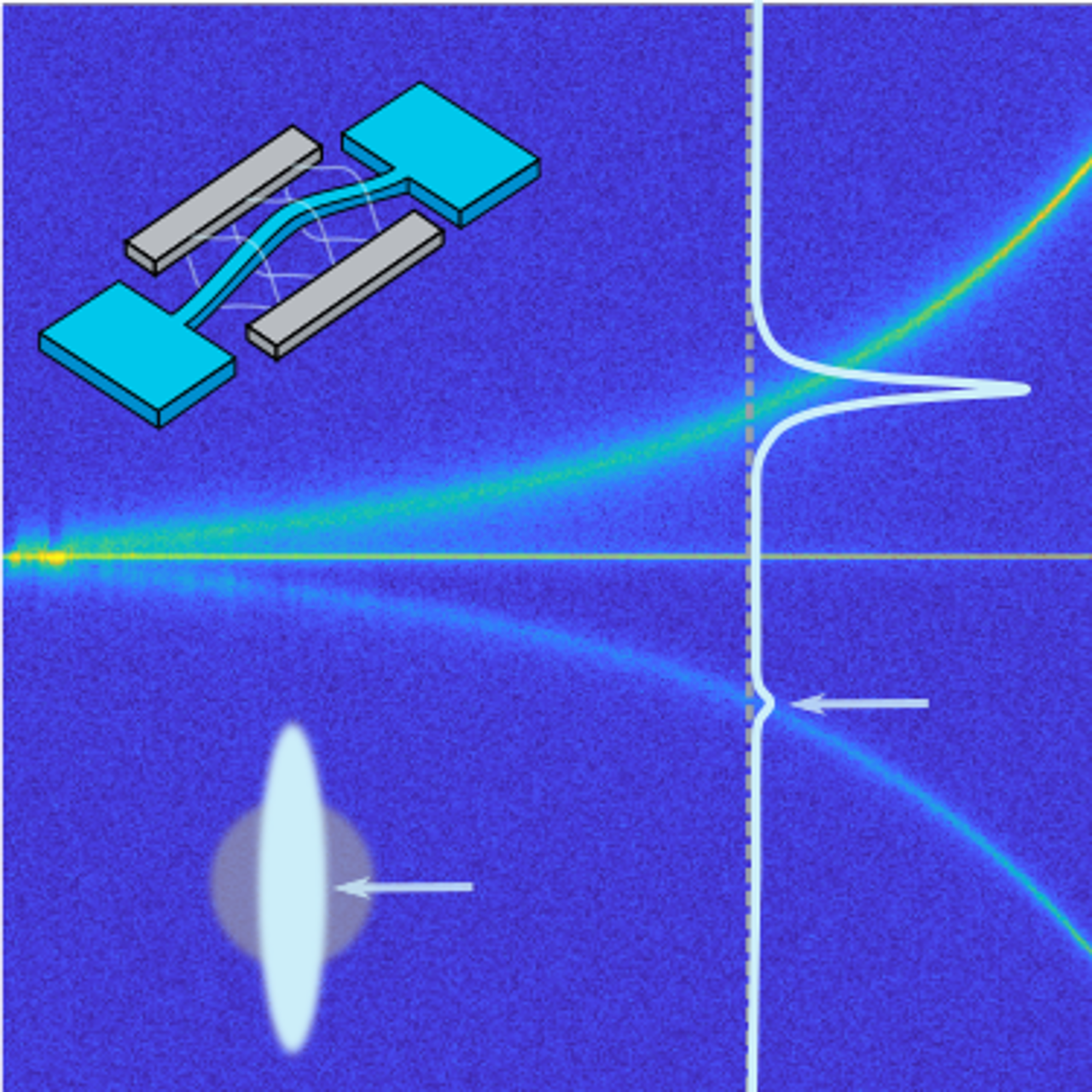
Iterative Adaptive Spectroscopy of Short Signals
A. Chowdhury, A. T. Le, E. M. Weig, H. Ribeiro
Physical Review Letters 131 (5), 50802 (2023).
We develop an iterative, adaptive frequency sensing protocol based on Ramsey interferometry of a two level system. Our scheme allows one to estimate unknown frequencies with a high precision from short, finite signals consisting of only a small number of Ramsey fringes. It avoids several issues related to processing of decaying signals and reduces the experimental overhead related to sampling. High precision is achieved by enhancing the Ramsey sequence to prepare with high fidelity both the sensing and readout state and by using an iterative procedure built to mitigate systematic errors when estimating frequencies from Fourier transforms. A comparison with state-of-the-art dynamical decoupling techniques reveals a significant speedup of the frequency estimation without loss of precision.

Radiation Pressure Backaction on a Hexagonal Boron Nitride Nanomechanical Resonator
I. S. Arribas, T. Taniguchi, K. Watanabe, E. M. Weig
Nano Letters 23 (14), 6301-6307 (2023).
Hexagonal boron nitride (hBN) is a van der Waals material with excellent mechanical properties hosting quantum emitters and optically active spin defects, with several of them being sensitive to strain. Establishing optomechanical control of hBN will enable hybrid quantum devices that combine the spin degree of freedom with the cavity optomechanical toolbox. In this Letter, we report the first observation of radiation pressure backaction at telecom wavelengths with a hBN drum-head mechanical resonator. The thermomechanical motion of the resonator is coupled to the optical mode of a high finesse fiber-based Fabry-Perot microcavity in a membrane-in-the-middle configuration. We are able to resolve the optical spring effect and optomechanical damping with a single photon coupling strength of g(0)/2 pi = 1200 Hz. Our results pave the way for tailoring the mechanical properties of hBN resonators with light.

Thermoelastic damping in MEMS gyroscopes at high frequencies
D. Schiwietz, E. M. Weig, P. Degenfeld-Schonburg
Microsystems & Nanoengineering 9 (1), 11 (2023).
Microelectromechanical systems (MEMS) gyroscopes are widely used, e.g., in modern automotive and consumer applications, and require signal stability and accuracy in rather harsh environmental conditions. In many use cases, device reliability must be guaranteed under large external loads at high frequencies. The sensitivity of the sensor to such external loads depends strongly on the damping, or rather quality factor, of the high-frequency mechanical modes of the structure. In this paper, we investigate the influence of thermoelastic damping on several high-frequency modes by comparing finite element simulations with measurements of the quality factor in an application-relevant temperature range. We measure the quality factors over different temperatures in vacuum, to extract the relevant thermoelastic material parameters of the polycrystalline MEMS device. Our simulation results show a good agreement with the measured quantities, therefore proving the applicability of our method for predictive purposes in the MEMS design process. Overall, we are able to uniquely identify the thermoelastic effects and show their significance for the damping of the high-frequency modes of an industrial MEMS gyroscope. Our approach is generic and therefore easily applicable to any mechanical structure with many possible applications in nano- and micromechanical systems.

Frequency Comb from a Single Driven Nonlinear Nanomechanical Mode
J. S. Ochs, D. K. J. Boness, G. Rastelli, M. Seitner, W. Belzig, M. I. Dykman, E. M. Weig
Physical Review X 12 (4), 41019 (2022).
Phononic frequency combs have attracted increasing attention both as a qualitatively new type of nonlinear phenomena in vibrational systems and from the point of view of applications. It is commonly believed that at least two modes must be involved in generating a comb. We demonstrate that a comb can be generated by a single nanomechanical mode driven by a resonant monochromatic drive. The comb emerges where the drive is still weak, so the anharmonic part of the mode potential energy remains small. We relate the experimental observation to a negative nonlinear friction induced by the resonant drive, which makes the vibrations at the drive frequency unstable. We directly map the measured trajectories of the emerging oscillations in the rotating frame and show how these oscillations lead to the frequency comb in the laboratory frame. The results go beyond nanomechanics and suggest a qualitatively new approach to generating tunable frequency combs in single-mode vibrational systems. They demonstrate new sides of the interplay of conservative and dissipative nonlinearities in driven systems.

Determining Young's modulus via the eigenmode spectrum of a nanomechanical string resonator
Y. S. Klass, J. Doster, M. Buckle, R. Braive, E. M. Weig
Applied Physics Letters 121 (8), 83501 (2022).
We present a method for the in situ determination of Young's modulus of a nanomechanical string resonator subjected to tensile stress. It relies on measuring a large number of harmonic eigenmodes and allows us to access Young's modulus even for the case of a stress-dominated frequency response. We use the proposed framework to obtain Young's modulus of four different wafer materials, comprising three different material platforms amorphous silicon nitride, crystalline silicon carbide, and crystalline indium gallium phosphide. The resulting values are compared with theoretical and literature values where available, revealing the need to measure Young's modulus on the sample material under investigation for precise device characterization. (C) 2022 Author(s).

Observing polarization patterns in the collective motion of nanomechanical arrays
J. Doster, T. Shah, T. Fosel, P. Paulitschke, F. Marquardt, E. M. Weig
Nature Communications 13 (1), 2478 (2022).
In recent years, nanomechanics has evolved into a mature field, and it has now reached a stage which enables the fabrication and study of ever more elaborate devices. This has led to the emergence of arrays of coupled nanomechanical resonators as a promising field of research serving as model systems to study collective dynamical phenomena such as synchronization or topological transport. From a general point of view, the arrays investigated so far can be effectively treated as scalar fields on a lattice. Moving to a scenario where the vector character of the fields becomes important would unlock a whole host of conceptually interesting additional phenomena, including the physics of polarization patterns in wave fields and their associated topology. Here we introduce a new platform, a two-dimensional array of coupled nanomechanical pillar resonators, whose orthogonal vibration directions encode a mechanical polarization degree of freedom. We demonstrate direct optical imaging of the collective dynamics, enabling us to analyze the emerging polarization patterns, follow their evolution with drive frequency, and identify topological polarization singularities. Coupled nanomechanical resonator arrays serve as model systems to study collective dynamical phenomena. Doster et al. introduce a two-dimensional array of pillar resonators encoding a mechanical polarization degree of freedom for analyzing polarization patterns and identifying topological singularities.

Optomechanics for quantum technologies
S. Barzanjeh, A. Xuereb, S. Groblacher, M. Paternostro, C. A. Regal, E. M. Weig
Nature Physics 18 (1), 15-24 (2022).
Interaction with light can be used to precisely control motional states. This Review surveys recent progress in the preparation of non-classical mechanical states and in the application of optomechanical platforms to specific tasks in quantum technology. The ability to control the motion of mechanical systems through interaction with light has opened the door to a plethora of applications in fundamental and applied physics. With experiments routinely reaching the quantum regime, the focus has now turned towards creating and exploiting interesting non-classical states of motion and entanglement in optomechanical systems. Quantumness has also shifted from being the very reason why experiments are constructed to becoming a resource for the investigation of fundamental physics and the creation of quantum technologies. Here, by focusing on opto- and electromechanical platforms we review recent progress in quantum state preparation and entanglement of mechanical systems, together with applications to signal processing and transduction, quantum sensing and topological physics, as well as small-scale thermodynamics.

Room temperature cavity electromechanics in the sideband-resolved regime
A. T. Le, A. Brieussel, E. M. Weig
Journal of Applied Physics 130 (1), 14301 (2021).
We demonstrate a sideband-resolved cavity electromechanical system operating at room temperature. It consists of a nanomechanical resonator, a strongly pre-stressed silicon nitride string, dielectrically coupled to a three-dimensional microwave cavity made of copper. The electromechanical coupling is characterized by two measurements, the cavity-induced eigenfrequency shift of the mechanical resonator and the optomechanically induced transparency. While the former is dominated by dielectric effects, the latter reveals a clear signature of the dynamical backaction of the cavity field on the resonator. This unlocks the field of cavity electromechanics for room temperature applications.

Universal Length Dependence of Tensile Stress in Nanomechanical String Resonators
M. Buckle, Y. S. Klass, F. B. Nagele, R. Braive, E. M. Weig
Physical Review Applied 15 (3), 34063 (2021).
We investigate the tensile stress in freely suspended nanomechanical string resonators, and observe a material-independent dependence on the resonator length. We compare strongly stressed string resonators fabricated from four different material systems based on amorphous silicon nitride, crystalline silicon carbide as well as crystalline indium gallium phosphide. The tensile stress is found to increase by approximately 50% for shorter resonators. We establish a simple elastic model to describe the observed length dependence of the tensile stress. The model accurately describes our experimental data. This opens a perspective for stress engineering the mechanical quality factor of nanomechanical string resonators.



